With the follow-on elements to the Paris Agreement – the so-called Paris “rulebook” – all but finished at COP 24 in Poland last December, the concern of the international climate community is now focused principally on the challenge of rapidly increasing the ambition of country efforts to reduce greenhouse gas emissions.
This makes sense. After all, the “nationally determined contributions” (NDCs) that countries put forward in Paris, while an important step forward, only address emissions in the 2025 and 2030 timeframe and still leave us on track for an increase in global average temperature of around 3 degrees Celsius – far from Paris’s “well below 2 degrees Celsius” goal or its best-efforts call to hold the increase to 1.5 degrees Celsius. And the signals from the natural world are more and more dire, both the rising crescendo of extreme events – killing heat waves, massive storms, rising seas, brutal wildfires, droughts, floods – and the steady march of new studies, such as last year’s U.N. report “Global Warming of 1.5°C” or its report last month on “Climate Change and Land,” warning of serious risks to the world’s food supply. Its upcoming report on climate change and oceans is sure to deliver more deeply troubling news.
Against this backdrop, the climate community is looking for results in the 16-month sequence from the Secretary General’s Climate Summit this month to COP 25 in Chile this December and COP 26 next year in the U.K. Unless countries around the world significantly ramp up their NDCs, many observers are likely to conclude that the Paris Agreement is failing to live up to its promise.
The concern of the international climate community is now focused principally on the challenge of rapidly increasing the ambition of country efforts to reduce greenhouse gas emissions.
Let me make a few comments both on how we should and should not understand the role of the Paris regime and on the essential ingredient for spurring the ambitious action we need to meet the climate threat.
The Paris regime has a crucial role to play in helping to drive the action needed to contain climate change. The act of reaching agreement itself, in December 2015, sent a powerful signal to governments, boardrooms, and civil society that leaders had finally made a pivotal decision to tackle climate change for real. The Paris Agreement articulated essential temperature goals, established a structure for escalating commitments to cut emissions, put in place a robust transparency system, and provided for five-year review cycles so we can track individual and aggregate progress.
Moreover, if the regime can evolve in a constructive manner, toward a spirit marked by common endeavor rather than rancor and division, it can become what it was intended to be – the heart of the global climate effort, where countries regularly come together, hold each other to account, take stock of the dangers we face, work with each other in large groups and small, and collaborate with civil society and the private sector. Historically, climate negotiators have reflexively sought to prove to their counterparts in the arena how much their country doesn’t or shouldn’t have to do. Old habits die hard, but one of the challenges of the Paris regime will be for countries on all sides to move beyond this counter-productive mindset.
But for all that, the Paris regime cannot “solve” climate change. It is a robust, well-constructed mechanism through which motivated countries can do what is needed. It can certainly help inspire and encourage that motivation, but it cannot supply it. The ongoing success of Paris depends on the power of rising norms and expectations among leaders and citizens everywhere regarding the imperative of full-throttle climate action. If we are falling seriously short on ambition – and we are – the problem isn’t fundamentally a defect in the Paris architecture, it is a shortcoming of national commitment around the world.
The Paris regime cannot “solve” climate change.
And that shortcoming is the heart of the matter. That’s what needs to be overcome. Of course, the technology challenges of decarbonizing the global economy are real, especially given the immense, embedded nature of the fossil fuel incumbency as well as our global forestry and land-use practices. But there is no question that, from the viewpoint of innovation, policy, and financing, we can do what is needed to rapidly transform our energy and our land-use system. We have an extraordinary innovation culture in the world today, nowhere more so than in the United States; we know what policies and incentives to put in place; and we can more than afford the required investment.
But all of these elements depend crucially upon human will, resolve, and motivation. And not nearly enough of our political and societal leaders or our citizens have that motivation – yet.
On one extreme we have President Trump, seeking to reverse every strong domestic measure President Obama took on climate change, committed to withdrawing from the Paris Agreement, and ridiculing even the premise that climate change is a global concern, much less an existential threat. Or we have President Bolsonaro in Brazil, who, in his belligerent carelessness, seems bent on allowing the Amazon to be put to the torch and chain saw – a global ecological calamity that must be stopped. They are two latter day Neros, fiddling while the Earth burns.
But even if we turn to the much larger group of political leaders who recognize that climate change is real and important, very few among them grasp the speed and scale of the action needed. And we see a similar lack of genuine understanding in business, among economists, in the national security community, among people of good will and intentions.
What we need to do is reverse the mindset of leaders and policymakers regarding climate change. What they do now, in effect, is ask: “What can we do on climate change given the political, social, and economic challenges we confront?” But that question is backwards. What they need to ask is: “How can we maximize good political, social, and economic outcomes given what we must do to confront climate change?”
Change in attitudes and expectations is starting to happen. Look at the current Democratic presidential primary in the United States, where climate change has become a top concern of voters in a way that wasn’t remotely the case even in 2016. Look at the worldwide student strikes inspired by the Swedish teenager Greta Thunberg. Look at the examples of exceptional leadership at the state level in the United States in places like California and New York, among others. And U.N. Secretary General Guterres is using his office and authority to make clear what leaders around the world need to do.
But more has to happen. We need to hasten the coming of that tipping point when business-as-usual politicians and corporate leaders understand they will fail, lose office, lose their standing, or be left behind unless they meet the climate challenge head on. These kinds of things can happen. These kinds of things have happened. In a recent New Yorker interview with Elizabeth Kolbert and Bill McKibben, McKibben recalled that on the original Earth Day, April 22, 1970, 20 million people took to the streets to demand change. In the aftermath of that mobilization and all that led to it came, in short order, the Clean Air Act, the Clean Water Act, the Endangered Species Act, and the creation of the Environmental Protection Agency (EPA). The future is in our hands.
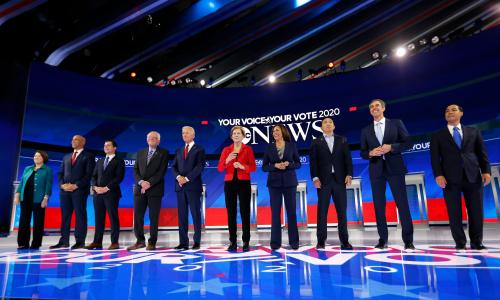
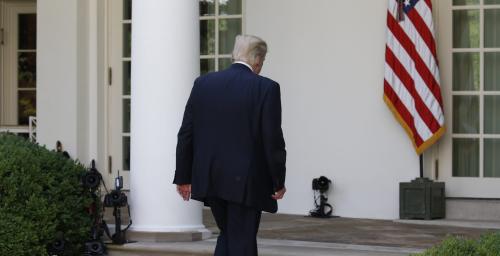
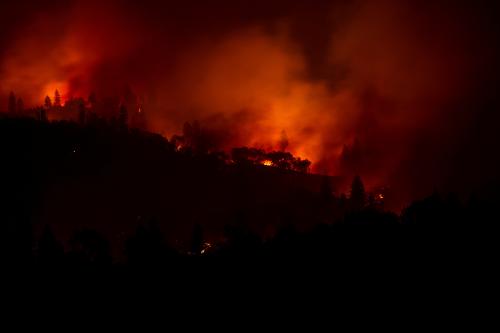
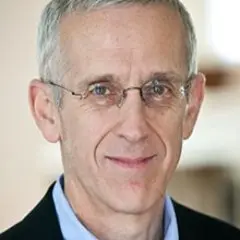

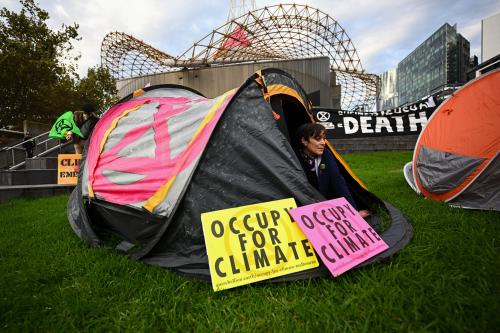
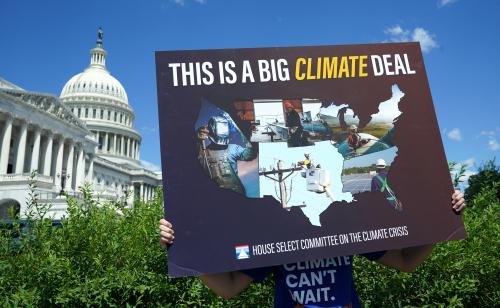
Commentary
The fight to contain climate change – Implementing Paris, mobilizing action
September 16, 2019